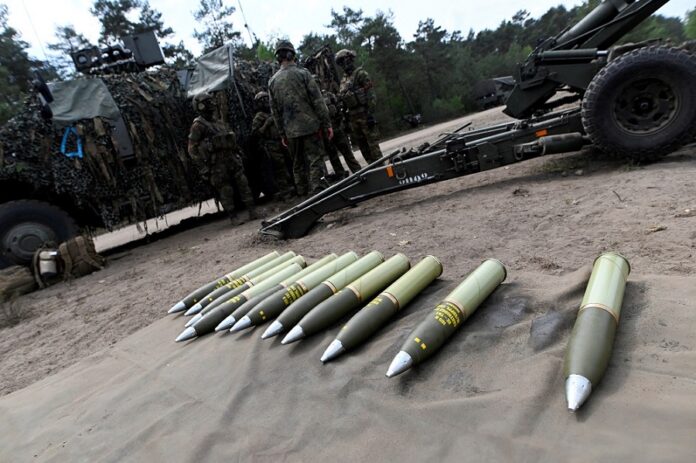NATO is expected to ask its members to raise its ammunition stockpiles which have been badly depleted by the war in Ukraine, as allies try to put arms supplies to Kyiv and their own militaries on a sustainable footing after a year in crisis mode, according to Reuters.
Even before Russia’s invasion of Ukraine on February 24 last year, many NATO countries fell short of meeting the alliance’s stockpiling targets, as officials considered wars of attrition with large-scale artillery battles a thing of the past.
But the pace of deliveries to Ukraine, where Kyiv’s troops are firing up to 10,000 artillery shells daily, has drained Western inventories and exposed holes in the efficiency, speed and manpower of supply chains.
“If Europe were to fight Russia, some countries would run out of ammunition in days,” a European diplomat told Reuters.
NATO has just completed an extraordinary survey of the remaining munition stocks, a NATO official told Reuters on condition of anonymity.
Now the stockpiles are running even lower due to the conflict in Ukraine, making it likely that NATO will raise the target levels for their members’ ammunition reserves, the source said.
Just how many rounds are left in Western military inventories is highly classified. The same goes for the NATO stockpiling targets, which are specific to each member state and one of the alliance’s best kept secrets. Generally speaking, NATO tasks each ally with providing certain capabilities that the alliance can draw upon in case of a conflict.
This could, for example, mean a certain ally may have to have one armoured division – some 10,000 to 30,000 troops – fully equipped and ready with ammunition, capable of fighting at a certain level of intensity for a certain amount of time.
Factoring all these conditions in, the country will have to provide a certain amount of ammunition, tanks, howitzers and what else may be needed to fulfil NATO’s requirements.
Germany alone was 20 billion euros short of reaching the NATO target before the invasion, according to a defence source. The German defence ministry did not immediately respond to a request for confirmation.
Decisions on stockpiling goals are expected when NATO leaders meet for a summit in Lithuania in mid-July.
NATO defence ministers will discuss the issue in Brussels on Tuesday and Wednesday before dozens of Western leaders gather for the Munich Security Conference, ahead of the first anniversary of what Russia calls its “special military operation” in Ukraine.
The NATO official said the alliance was trying to address such concerns by bringing groups of allies together to strike multinational contracts for several years, and that he expected several such contracts to be signed at the Brussels meeting.
But there will be a long way to go until inventories fill up again.
“I don’t necessarily think that within the next year our stockpile levels will increase massively,” the NATO official said. “Any additional stockpiles we will have will be heading to Ukraine.”


